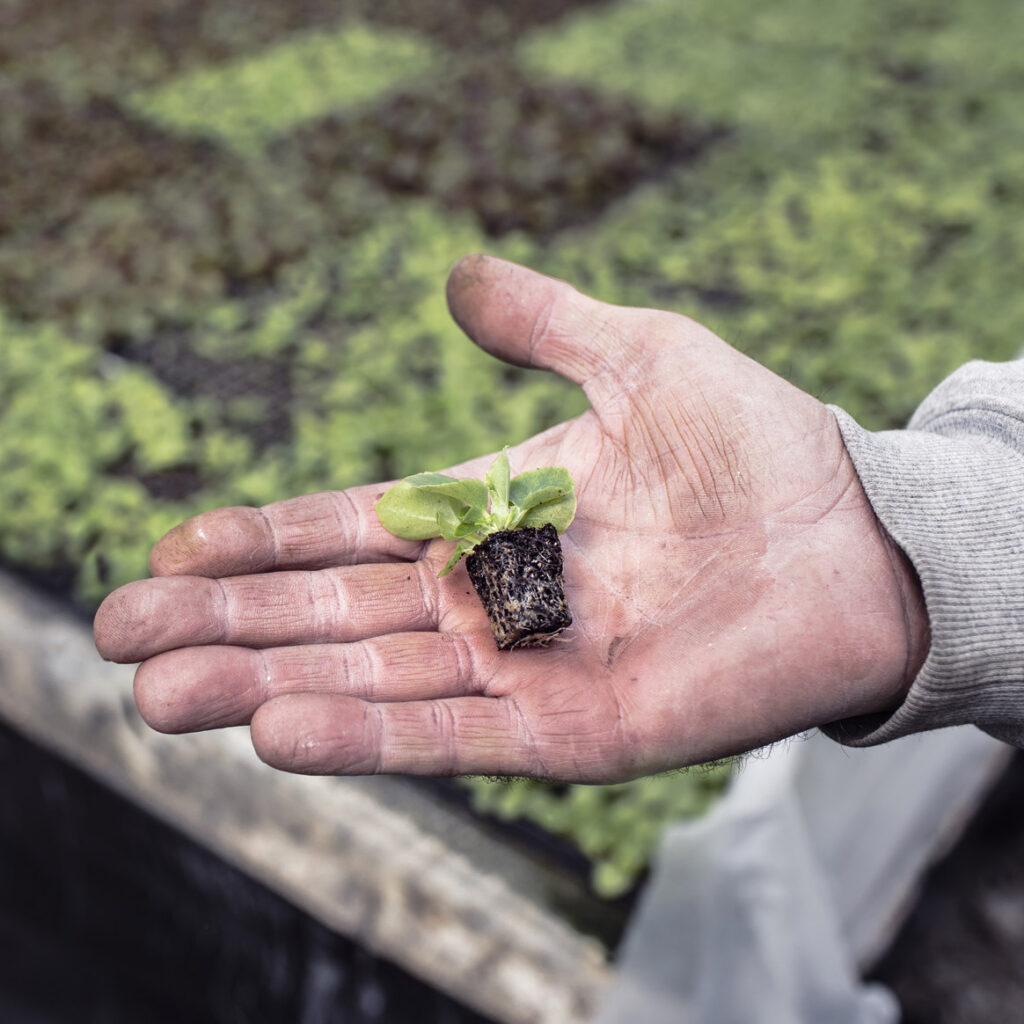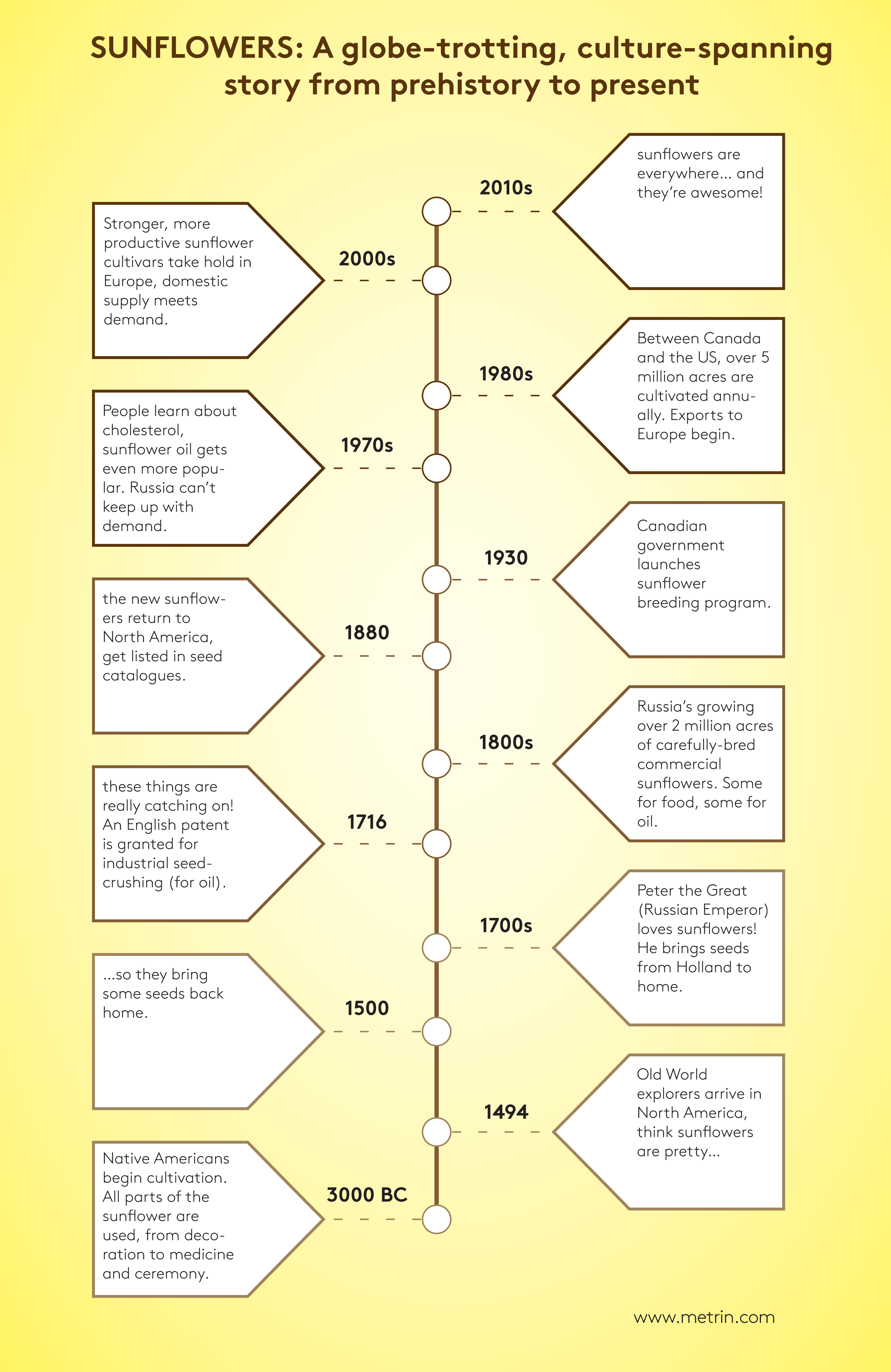From Prehistory to Present: a Sunflower Story!
The story of the sunflower (and its continent-hopping domestication)
Sunflowers have been an important crop for a long time. This story goes back at least 5,000 years to Native American cultures. Some archaeologists believe the plant was among the first crops domesticated by humans- even before corn.
Why would ancient peoples cultivate a simple flower for decoration and not for food? Surely, food should’ve been a top priority? Sure, it’s pretty, but back then it didn’t look much like the single-headed beauty we know and love today.
The answer, of course, is in the seeds and the plentiful oil they produce. But every part of the plant had a use.
Some tribes would grind the seeds into a mash to mix with other grains and legumes or bake into bread. Others would boil the flower heads to extract the oil, which eventually became a popular ingredient in traditional fry-bread recipes. As use increased, so did selection. Ancient peoples, of course, had no knowledge of genetics but they did know how to choose plants and cultivate them to encourage desired properties.
That’s why the sunflowers we know today look almost nothing like their ancestors. Careful selection of stock led to plants that produced more and bigger seeds.
Flash forward a few thousand years…
When Europeans first arrived in North America some 500 years ago, they’d never seen a sunflower. But here, they were everywhere – in food, on ceremonial clothing, used as dye (purple!), and as decorations. The woodiest stalks were even used as building material, and seed-oil was applied to skin and hair to give luxurious, soft texture.
By this time, the tribes were even cultivating sunflowers for medicinal purposes.
They would use sunflower oil and roots in a variety of remedies including snake-bite ointments and other detoxification treatments. The oil’s anti-inflammatory properties were already well known, and it was regularly used in treatment for rheumatism and inflammations.
All of this was strange to the European explorers. What seemed a simple flower had so many uses! But it would take nearly a hundred more years for seeds to arrive back in Europe. That’s where the modern history of the sunflower began.
To Europe – and beyond
Just like the tribes before them, the Europeans initially viewed the sunflower as a simple ornamental flower. It would take them over a century to re-discover the plant’s versatile utility and begin grinding the seeds to produce oil.
But we’re still not quite to the sunflowers of today. For that, we’ll need to spend 200 years in Russia.
Peter the Great, then-Tsar of the Russian Empire, fell in love with this exotic flower on a trip to Holland.
He procured seeds to bring home. They caught on quickly, as sunflower oil was not on the Russian Orthodox Church’s list of prohibited Lent foods. Cultivation magnified accordingly.
Over 2 million acres of carefully-bred sunflowers – much like the ones we know today – were being cultivated across southern Russia. Soon these new seeds made their way back across the Atlantic to “the New World” in the hands of Russian immigrants.
By the close of the century, the new sunflower had become so popular that “Mammoth Russian” strains began to appear in American and Canadian seed catalogues.
The commercialization of the sunflower was off to a strong start. Although it took North American settlers quite a while to rediscover the plant’s many uses and properties (they used it primarily for chicken-feed, at first), the rise of the sunflower would never slow.
Back to North America – and into industrial-scale cultivation
It took us until the 1920s to relearn what Native Americans and Canadians had known for millennia: sunflower oil was delicious, nutritious, and could be produced in abundance; especially from this new Russian breeding stock.
Between the 20s and the 40s, cultivation exploded as people began to realize the sunflower’s cash-crop potential. In 1930, the Canadian government launched an official cultivation program and crushing-plants (for oil production) began to spring up like weeds from North to South.

Within decades, between Canada and the US, well over 5 million acres were being cultivated. And sunflower oil had caught on in a big way across Europe – so much that Russian exporters couldn’t keep up with the demand for seeds.
So the sunflower crossed the Atlantic… again… as North American seeds were shipped to Europe for processing and refinement. Demand remains high, but it can be satisfied domestically as today’s cultivars are both stronger and more productive.
Today, thanks to modern science, we know that sunflower oil is even more useful than anyone ever imagined (though native tribes were definitely on the right track, even without fancy laboratory equipment).
Sunflower seeds (and oil) are incredibly rich in easily-digestible protein, contains every amino acid we need to survive, and is rich in vitamins A, C, D, and E.
To say nothing of its Omega-3’s, other essential fatty acids, and trace minerals.
Today, we understand sunflowers in a whole new way.
Everyone knows sunflowers have a variety of culinary uses. But thanks to detailed laboratory analysis, we’ve identified other properties our ancestors couldn’t even have guessed at. We’ll look deep into its medicinal and nutritional properties in another piece but, for now, suffice to say that its benefits are many – and diverse.
It turns out that what Old World explorers took to be a simple ornamental flower is much more than beautiful: every part of the plant has a use, from dye to textiles to skin care. We’re lucky sunflowers made their half-world journey several times over.
Now we know they’re one of Nature’s best inventions (next, we’ll show you why).








